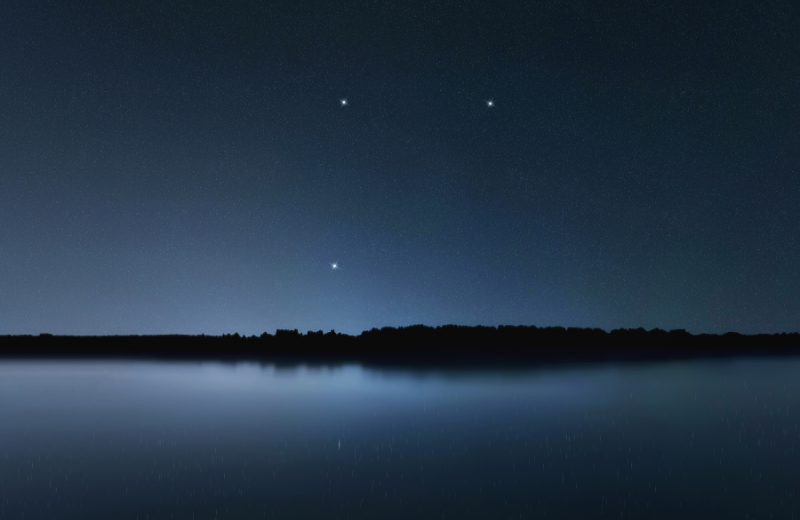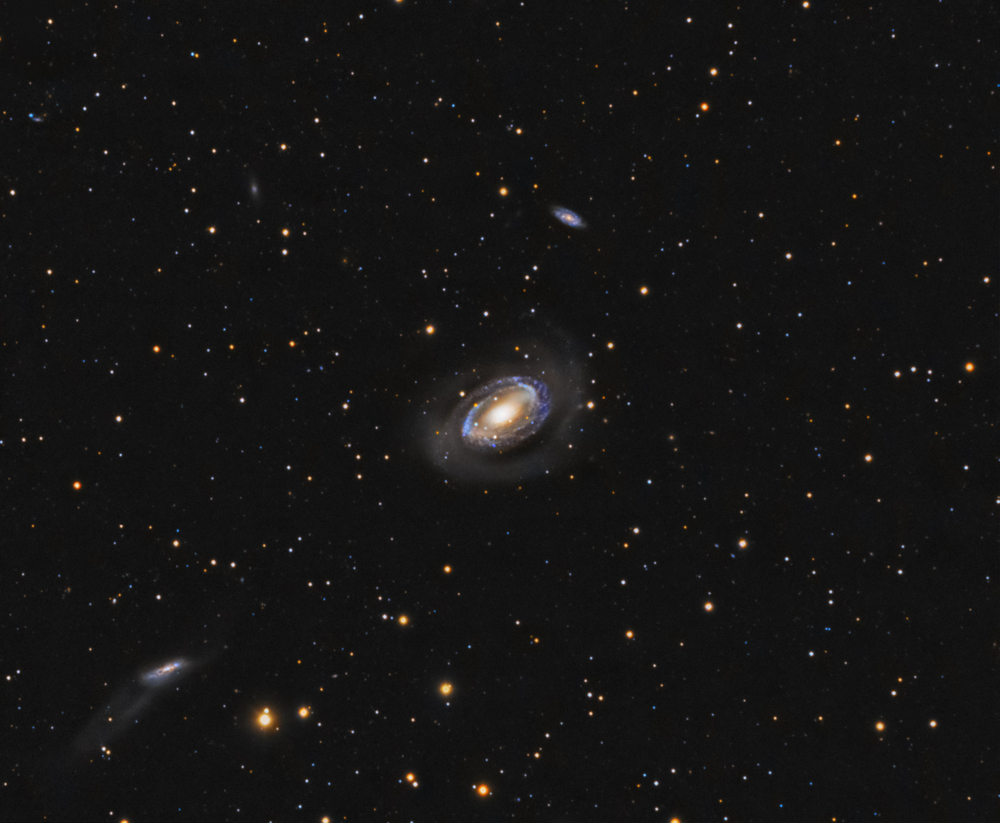Coma Berenices is a charming constellation with a rich history, unique appearance, and connection to mythology. Named after an ancient queen's gesture of love and sacrifice, this constellation holds an intriguing position in the night sky. In this guide, you’ll learn all about Coma Berenices, from its mythological origins to the galaxies and star clusters it contains.
Jump to:
- What is the Coma Berenices Constellation?
- What Does Coma Berenices Look Like?
- How Far is the Coma Berenices Constellation from Earth?
- The Coma Berenices Constellation Myth
- Coma Berenices’ Stars
- Nebulae in the Coma Berenices Constellation
- Finding Coma Berenices in the Sky
- Fun Facts About Coma Berenices
- Study Astronomy for £29
Recommended for you!
Best SellersWhat is the Coma Berenices Constellation?
The Coma Berenices constellation is a fascinating collection of stars with an enchanting backstory. It’s a relatively small constellation, yet it holds a unique place in both the night sky and in mythology. Located near the northern celestial pole, it’s known for its beautiful star clusters and fascinating galaxy collection, making it a popular subject for astronomers.
What Does Coma Berenices Look Like?

Coma Berenices doesn’t have the distinct shape of a figure or object that many other constellations display. Instead, it resembles a scattered patch of faint stars, often appearing like a fuzzy clump rather than a recognisable figure. Despite its dimmer stars, it’s unique because of its visible star clusters. The constellation’s name, which translates to “Berenice’s Hair,” comes from the fact that its shape and clustering were likened to strands of flowing hair.
While its appearance may not stand out at first glance, viewing it through binoculars or a telescope reveals its many beautiful galaxies and star clusters, lending a more impressive view.
How Far is the Coma Berenices Constellation from Earth?
Coma Berenices is primarily composed of stars and celestial objects located roughly between 50 and 350 million light-years away. Its notable galaxies, like those in the Coma Cluster, are incredibly distant from us, though they remain visible through telescopes. The brightest stars of Coma Berenices, however, are within a much closer range, roughly 280 to 320 light-years away, allowing you to see the constellation unaided on a clear night.
The Coma Berenices Constellation Myth

The constellation Coma Berenices has a fascinating mythological backstory rooted in Greek and Egyptian history. According to the legend, Coma Berenices is named after Queen Berenice II of Egypt. The queen, worried about her husband’s safety during a dangerous military campaign, vowed to cut off her beautiful hair as an offering to the gods if he returned safely. When he did, she kept her word and placed her hair in a temple as a gift to the goddess Aphrodite. Miraculously, the hair went missing from the temple, and court astronomers claimed that the gods had immortalised it in the night sky as a constellation.
This story of devotion, sacrifice, and the transformation of a personal act into something eternal in the heavens gives Coma Berenices a unique position among the constellations.
Coma Berenices’ Stars
The Coma Berenices constellation may be modest in brightness, but it hosts several stars and clusters that make it uniquely captivating:
- Beta Comae Berenices – The brightest star in Coma Berenices, Beta Comae Berenices, shines with a magnitude of 4.3. Though dimmer than stars in nearby constellations, it still provides a focal point within Coma Berenices. Together with Alpha and Gamma Comae Berenices, Beta forms a subtle triangular shape, making it easier to locate this delicate constellation in the night sky.
- The Coma Star Cluster (Melotte 111) – Adding to its allure, Coma Berenices is home to the Coma Star Cluster, also known as Melotte 111. This loose cluster contains dozens of stars bound weakly by gravity, creating a soft, hair-like effect when observed under dark skies. Visible to the naked eye, this cluster gives the constellation a distinct sparkle, beautifully fitting its name, which translates to "Berenice’s Hair."
Nebulae in the Coma Berenices Constellation

While Coma Berenices doesn’t host any prominent nebulae, it’s rich in galaxies and galaxy clusters. It’s part of the Coma Cluster, one of the largest known clusters of galaxies in the observable universe. The Coma Cluster contains over a thousand galaxies, including notable ones like NGC 4889 and NGC 4874, which are among the largest galaxies ever observed.
For those with an interest in deep-sky objects, this cluster is particularly captivating. With the right equipment, you can observe galaxies within this vast cluster, providing a glimpse into some of the most distant and ancient regions of our universe.
Finding Coma Berenices in the Sky
Coma Berenices is visible mainly during spring in the Northern Hemisphere, with peak visibility in April and May. During this time, the constellation reaches its highest point in the night sky, making it easier to locate despite its fainter stars.
Locating Coma Berenices
To find Coma Berenices, you can use Leo as a starting point:
- Locate Leo – Begin by finding the prominent stars of Leo, particularly Regulus.
- Move Northeast – Once you've identified Leo, shift slightly northeast to locate the triangular shape formed by Beta, Alpha, and Gamma Comae Berenices.
Viewing Coma Berenices with Binoculars or a Telescope
- With binoculars: Binoculars help enhance the visibility of the fainter stars in Coma Berenices, especially in areas affected by light pollution.
- With a telescope: A telescope will give you a detailed view of the constellation’s clusters, like the Coma Star Cluster, adding depth to your stargazing experience.
Best Viewing Conditions
For the clearest view of Coma Berenices, find a dark location away from city lights on a clear, moonless night. This will bring out the faint stars and clusters, helping you appreciate this unique constellation in all its subtle beauty.
Recommended for you!
Best SellersFun Facts About Coma Berenices
- Historical Significance: Coma Berenices is one of the few constellations named after a historical figure rather than a mythological character.
- A Hub for Galaxies: The constellation is rich in galaxies, especially in the Coma Cluster. For galaxy hunters, it’s a treasure trove worth exploring.
- Home to Messier Objects: Coma Berenices contains Messier objects, specifically Messier 53 and Messier 64. Messier 64, also known as the “Black Eye Galaxy,” is a unique spiral galaxy with a distinctive dark dust lane.
- One of the Faintest Constellations: Due to its dim stars, it’s often overlooked by amateur astronomers but offers rewarding views with binoculars or a telescope.
Study Astronomy for £29
If the Coma Berenices constellation has sparked your curiosity, why not explore more about the stars and the cosmos with our Astronomy Diploma Course at Centre of Excellence? This course offers a detailed understanding of the universe, from constellations and star types to the fundamentals of space observation. Perfect for all budding astronomers, the course is available for a discounted price of £29.













